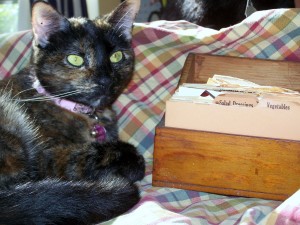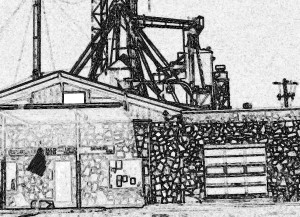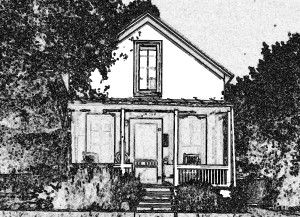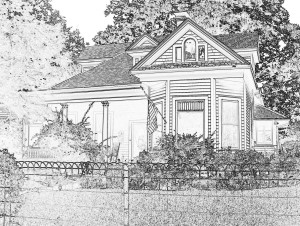OK, so I have an old recipe box full of hand-copied or typewritten recipes — actually, I have two — one of Mom’s and one from Granny Jessie, and I am improving the Luna City website by adding a page of recipes … recipes from the Luna City Cafe and Coffee!
Most of will be from these two boxes, and when I can, I will be adding pictures to improve the look.
The cover page on the website is here. Enjoy
My two books for the year are done – both the historical adventure, and the contemporary romp. (Two in the space of a year? Haven’t come close to that since the Adelsverein Trilogy, which was three separate books – but one single narrative – done in the space of two years, research, writing and all.) Now comes the hard graft of putting the two out in front of the reading public, via the usual internet publicity methods, and in doing Christmas market events in various small towns, and somewhat larger towns in the neighborhood of San Antonio.
Yes – writing the book is just half the job. The other half is the marketing thereof – which starts next weekend with a craft fair at the Community Activity Center in Bulverde, Texas, followed on the next weekend with the Christmas market – Weihnachtsmarkt – in New Braunfels. Weihnachtsmarkt is staged in the New Braunfels Civic Center every year as a benefit for the Sophienburg Museum and Archives. A good few years ago, they began setting up for local authors in the long hallway which leads from front to back of the Conference Center. And it’s indoors, and the tables are supplied … although, my daughter has been saying lately that if I write any more books, I will have to start getting two tables … or even buy a floor stand to display the books, and flyers and postcards about my books on. With Sunset and Steel Rails and The Chronicles of Luna City, and that doesn’t even count the German edition of Adelsverein: The Gathering, the hard-bound all-in-one volume of the Trilogy, or that first harmless little family memoir, assembled from early blog-posts and published through Booklocker in …(hastily checking copyright page of Our Grandpa Was an Alien) … 2004? Wow! Time does fly when you are having fun.
Ten books in ten years. That’s the same rate achieved by some of the professionals, although there were scribblers of pulp fiction who managed even more than that. Still, at this point in the game, every one of my books – even the YA adventure collection of Lone Star Sons, and the comic narrative set in contemporary small-town Texas – is an advertisement for all the others, historical fiction-romance-western, call them what you well.
And with that – off to work up promotional flyers for the market events. The work, as it says on those comic office signs, isn’t over until the paperwork is done …
I know that I have not been posting much lately – here or anywhere else lately; just the bare minimum of commenting on other people’s posts and other people’s blogs and websites, but I had a couple of projects for the Tiny Publishing Bidness to work on, and then the two major projects to finish, format and upload to various platforms. Yes, I decided to go all-out and finish two books in time for the Christmas marketing season this year. Amazingly, neither one was the one that I had declared at the beginning of the year that I would have all done and ready to launch by this time … yes, the adventures of young Fredi Steinmetz in Gold Rush-era California is rolled back another year. Sigh. I still have to do an epic-truck-load of reading of contemporary accounts and skull out a plot sufficient and historically-accurate to fill the last half of the book; which so far in my head will include a stint in San Francisco the year of the epically well-organized Vigilante organization, encounters with various historic personages, to include William T. Sherman, Lotta Crabtree and her formidable mother, some murderous claim-jumpers and a young woman seeking justice – while disguised as a boy. So, yes I will get on to that presently. After all The Quivera Trail was held at a third completed while I worked on Daughter of Texas and Deep in the Heart, and it didn’t seem to do any harm in the long-run.
So – the Harvey Girl adventure, Sunset and Steel Rails is done and ready for release on the 10th, in print and in Kindle. Amazon is dragging their feet apparently, in expediting the ‘Look-Inside’ feature. It isn’t up at present, but it should be in the next couple of days. Not bad, for something that I only got inspired to start in February of this year. But The Chronicles of Luna City is a light and amusing present-day trifle which my daughter and I only got started on at the end of July – and here it is November, and that book is done and nearly finalized as well. Three months, and just 70,000 words (but with pictures!) which is short for me, as most of the other books run 125,000 and up. (Although Lone Star Sons pegged in at 65,000.) There was one of the professional pulp adventure fiction writers – whose name escapes me at the moment – who was said to have done a book a month at one point in his career. Don’t know what the total word count was on any of them, but he must have worked in a white-hot blaze of energy … and Luna City is a light and diverting trifle, requiring very little research. Well, except for looking up restaurant equipment, and the names of obscure British TV series of the 1980s, and making certain that there aren’t any real companies with the same names of companies that I have mentioned in Luna City. Movie production companies really go for the obscure, I have to say. Had to nix six or seven possible names because there is a real production company out in the world with the name of something I thought would work for a movie production company. Luna City is pure contemporary escapism, utterly devoid of any redeeming social value in the eyes of the established guardians of our high literary culture … which I believe a lot of us have a need of these days, given how particularly screwed up, violent, and depressing real life seems to be, lately. (Oh, Established Guardians of our High Literary Culture? Yoo-hoo … over here! Now, gaze lovingly upon my upraised middle finger!)
So, light blogging will commence, now that all the hard labor of writing, editing, formatting and polishing have been done. Did you miss me?
OK, so Sunset and Steel Rails is all but launched, and I am coming down the last stretch on Chronicles of Luna City — and that’s when I get the most brilliant ideas evah! for a book. Depend on it – almost never fails.
So, this one is to start each chapter in Chronicles with a black and white illustration … highly filtered photographs that I have taken of various places in Texas which have inspired some of the shenanigans in Chronicles. Done and done … and here is a sample or two. OK, this is short, as I simply have to scribble one more chapter for it in the next three days …







Recent Comments